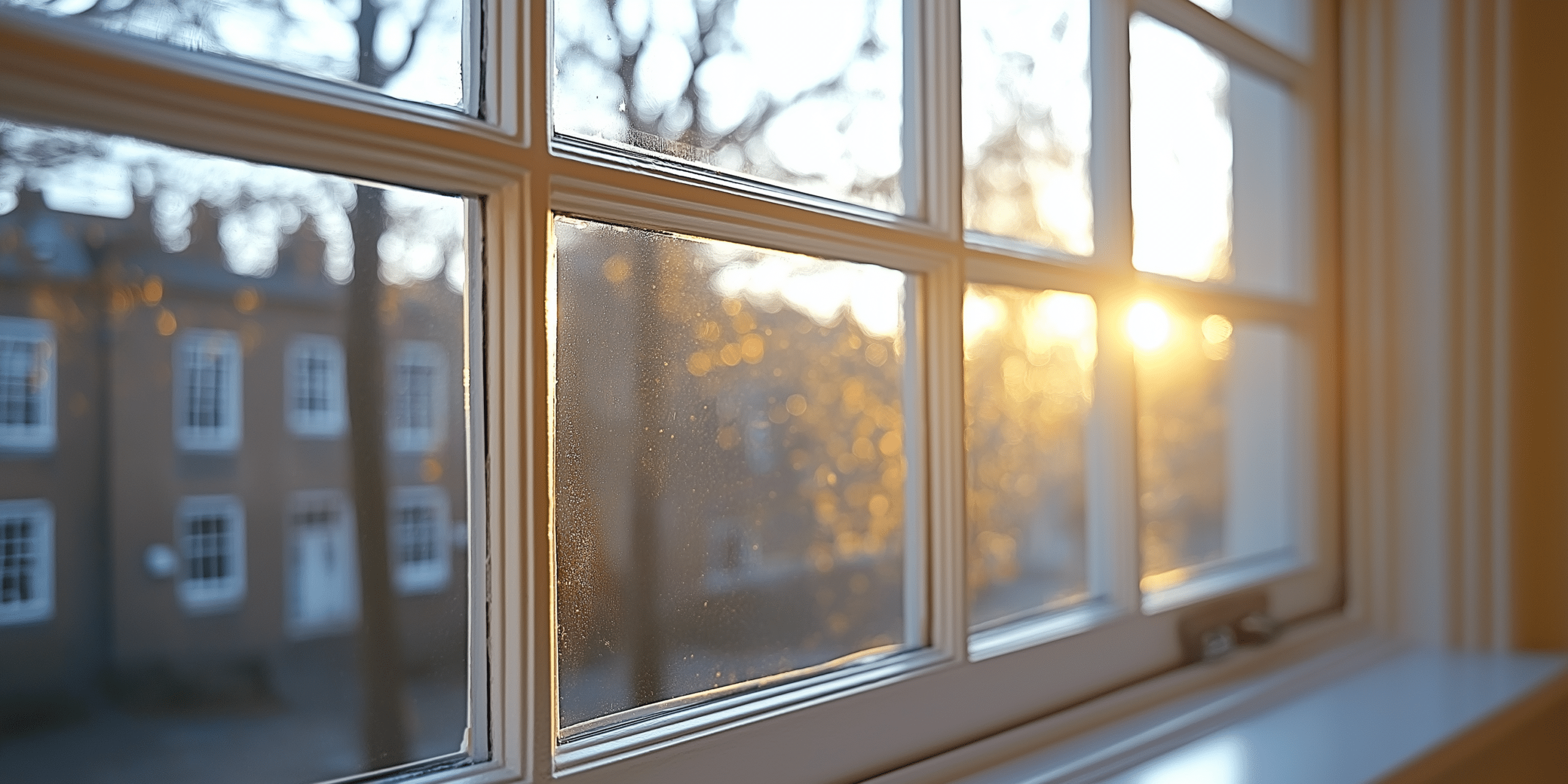Introduction to Sash Windows Rebated Meeting Stile

The rebated meeting stile refers to the overlapping portion of the two sash frames in a sash window. This feature enhances the window’s thermal insulation, security, and weatherproofing capabilities by creating a tight seal when the sashes are closed. Rebated stiles can improve acoustic performance by up to 10 dB, significantly reducing external noise, while also enhancing the overall energy efficiency of the window, with U-values as low as 1.65 W/m²K.
Understanding the Purpose of a Rebated Meeting Stile
The primary purpose of the rebated meeting stile is to provide a secure and insulated connection between the upper and lower sashes of a sash window. This overlap not only improves the window’s ability to keep out drafts and moisture but also adds an extra layer of security.
By reducing gaps and potential points of entry for air and water, the rebated meeting stile significantly enhances the window’s energy efficiency and durability, making it a crucial element in both historical restorations and modern installations. This feature is essential for maintaining the structural integrity and aesthetic appeal of period properties, particularly in conservation areas.
Historical Context: Evolution of the Rebated Meeting Stile
The concept of the rebated meeting stile has evolved over centuries, with early sash windows featuring simpler designs. As architectural demands for energy efficiency and security grew, the design of the meeting stile was refined to include a rebate, improving the window’s functionality.
The rebated meeting stile was developed in response to the need for better-insulated and more secure windows, particularly in regions with harsh climates. This evolution reflects a broader trend in window design towards enhanced performance and durability. The adoption of rebated stiles was a key development in the preservation of historic buildings, allowing for modern energy efficiency standards to be met without compromising on the traditional aesthetic.
Technical Specifications of Rebated Meeting Stile in Sash Windows

The rebated meeting stile is typically constructed from robust materials like timber, uPVC, or aluminium, with precise dimensions to ensure a snug fit between the sashes. The rebate depth and width are carefully calculated to provide optimal sealing without impeding the sash movement.
The effectiveness of a rebated meeting stile depends on the material used, the accuracy of the rebate dimensions, and the quality of the sealing mechanisms employed. For instance, a well-designed timber rebated stile should have a minimum rebate depth of 10mm to ensure effective insulation and security. The use of aluminium with thermal breaks in the stile can further enhance energy efficiency, making it suitable for both modern and traditional settings.
Materials Used in Rebated Meeting Stiles
The choice of material for a rebated meeting stile is crucial for its durability and performance. Timber offers a traditional aesthetic and good insulation properties, while uPVC provides low maintenance and cost-effectiveness. Aluminium, known for its strength and durability, is often used in modern applications.
The material chosen affects the stile’s resistance to weathering, thermal performance, and ease of maintenance. For example, timber provides excellent insulation but requires regular upkeep, whereas uPVC offers lower maintenance at the expense of a less traditional appearance. Using high-quality timber or composite materials can significantly extend the lifespan of the windows while maintaining their aesthetic integrity.
Installation Process of Rebated Meeting Stiles
Installing a rebated meeting stile involves precise measurements and careful alignment to ensure that the sashes close securely without friction. The process requires expertise in joinery and an understanding of the specific requirements of the sash window being restored or installed.
The installation process includes measuring the sash frames, cutting the rebate to the required depth, fitting the stile into the sash, and ensuring that the stiles align perfectly to prevent air or water infiltration. Attention to detail is critical to achieving a tight, secure fit. The correct installation of rebated stiles can reduce installation time by up to 10%, as they align more easily and securely during fitting.
Benefits of Using a Rebated Meeting Stile

The rebated meeting stile offers several advantages, including improved thermal insulation, enhanced security, and increased durability of the sash window. It also contributes to the overall aesthetic by providing a cleaner, more integrated look.
The additional benefits of a rebated meeting stile, such as better energy efficiency and security, make it a superior choice for both historical renovations and new constructions. The rebate ensures a more effective seal, reducing heat loss and preventing unauthorized entry. This feature can improve the window’s resistance to forced entry by 30%, making it an ideal choice for residential properties.
Common Issues and Solutions with Rebated Meeting Stiles
Despite their benefits, rebated meeting stiles can sometimes present challenges, such as swelling in timber stiles or misalignment during installation. However, these issues can be addressed with proper material treatment and precise installation techniques.
Common issues include swelling in timber stiles, which can be mitigated by using treated wood or applying a protective finish. Misalignment can be avoided by ensuring accurate measurements and careful fitting during installation. Regular maintenance checks can also prevent problems from arising. Regular inspections and adjustments to the stiles to prevent operational issues, particularly in older or heritage properties.
Comparing Rebated Meeting Stiles with Other Types of Meeting Stiles
Rebated meeting stiles are often compared to traditional flat meeting stiles and double-rebated stiles. Each type has its advantages, with rebated stiles offering a balanced combination of security and insulation.
While flat meeting stiles may be simpler to install, they lack the enhanced insulation and security features of a rebated stile. Double-rebated stiles offer even greater performance but can be more complex to fit. The choice depends on the specific requirements of the building and the desired level of performance. While double-rebated stiles offer superior insulation, they may be less suitable for period properties where maintaining the original appearance is a priority.
Maintenance Tips for Rebated Meeting Stiles

Regular maintenance of rebated meeting stiles is essential to ensure their longevity and performance. This includes checking for signs of wear, applying appropriate finishes, and ensuring that the rebate remains clear of debris.
Regularly inspect the stile for signs of wear or damage, clean the rebate to prevent blockages, and reapply protective finishes as needed. For timber stiles, it’s important to treat the wood to prevent rot and swelling. For uPVC and aluminium stiles, cleaning with appropriate products will help maintain their appearance and function. Regular maintenance, including repainting and resealing, can extend the life of sash windows with rebated stiles by up to 50 years.
Final Thoughts on Sash Windows Rebated Meeting Stile
In conclusion, the rebated meeting stile is a crucial element in sash window design, offering significant benefits in terms of insulation, security, and aesthetic appeal. Whether restoring a historic building or installing new windows, understanding the importance and functionality of the rebated meeting stile is essential for achieving optimal performance.
The key takeaways include the enhanced thermal performance, increased security, and improved durability provided by rebated meeting stiles. These features make them an excellent choice for both preserving the integrity of historical structures and improving the efficiency of modern buildings. Using a rebated meeting stile can extend the lifespan of sash windows by reducing wear and tear on the moving parts, making them a long-term investment in both energy efficiency and property security.




